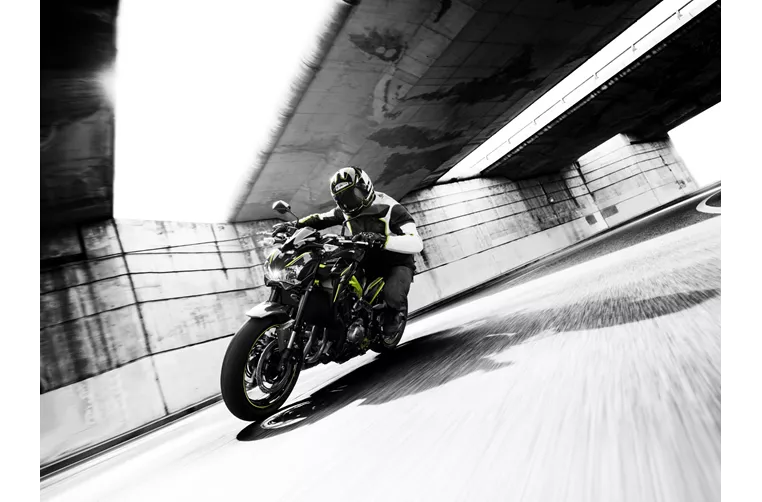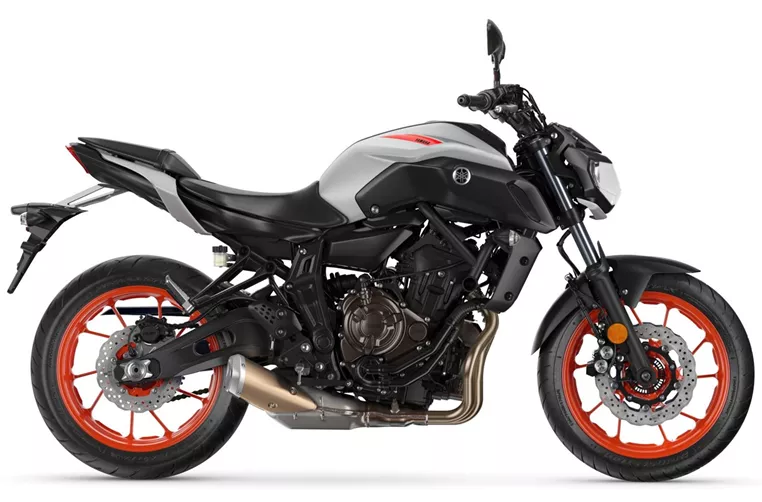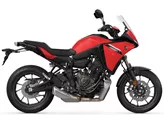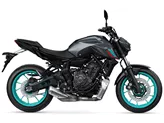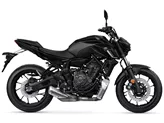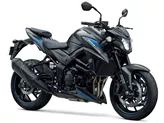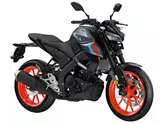Kawasaki Z900 2018 vs. Yamaha MT-07 2020

Kawasaki Z900 2018

Yamaha MT-07 2020
Genel bakış - Kawasaki Z900 2018 vs Yamaha MT-07 2020
The Kawasaki Z900 2018 and the Yamaha MT-07 2020 are both popular naked bikes that offer a thrilling riding experience. While they have some similarities in terms of their engine type, front suspension, brakes, and tire dimensions, there are also significant differences between the two models.
Starting with the engine specifications, the Kawasaki Z900 2018 boasts a more powerful engine with 125.4 HP compared to the Yamaha MT-07 2020's 75 HP. The Z900 also has a higher torque of 98.6 Nm compared to the MT-07's 68 Nm. This difference in power and torque translates to a more exhilarating and dynamic ride on the Z900.
In terms of engine configuration, the Z900 has four cylinders, while the MT-07 has two cylinders. The Z900's larger displacement of 948 ccm also contributes to its superior power output. However, the MT-07's smaller engine size of 689 ccm may appeal to riders who prioritize fuel efficiency and lower emissions.
Both bikes feature liquid cooling systems, ensuring optimal engine performance and temperature regulation. They also share a similar frame material, with steel frames providing stability and durability.
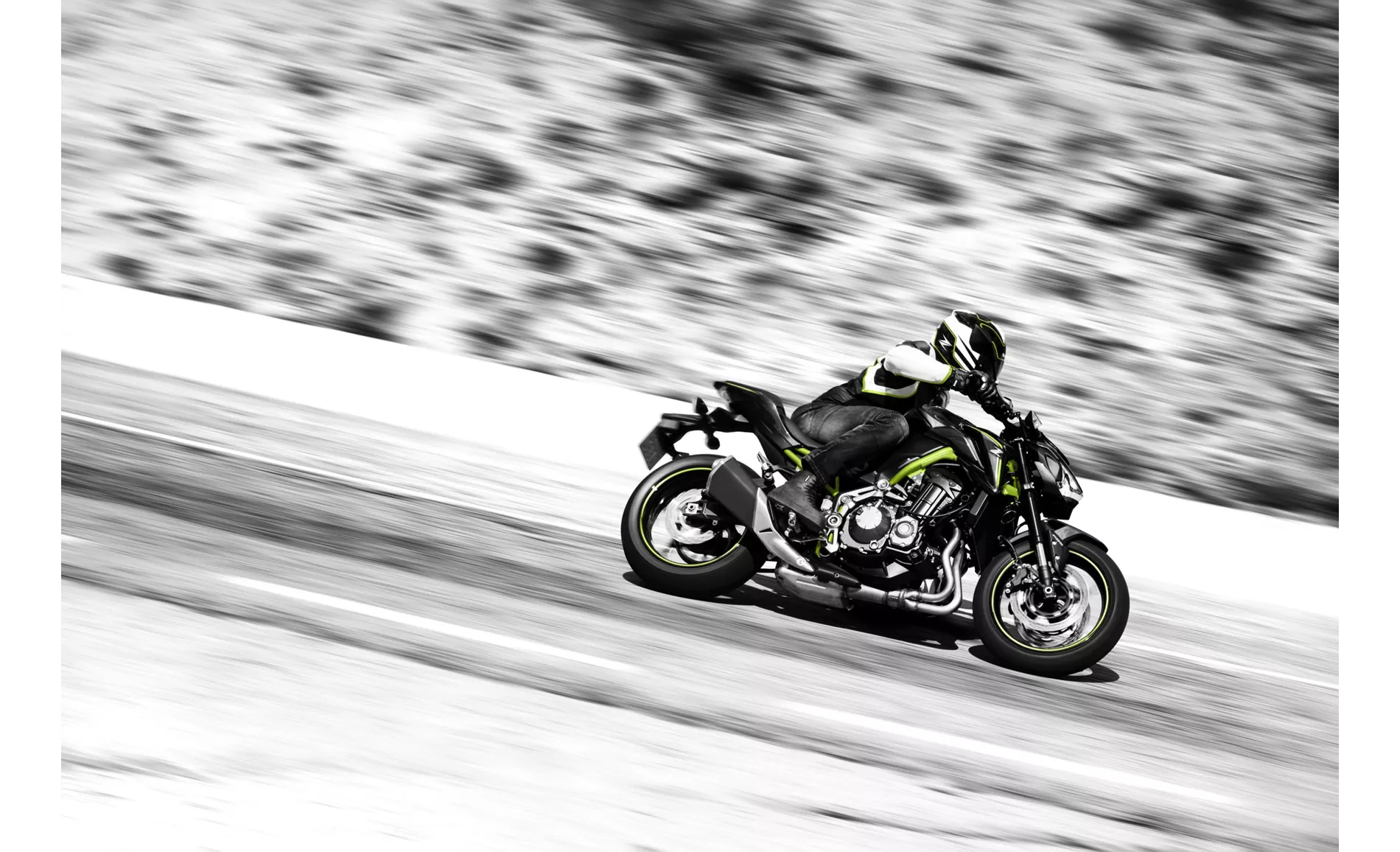
Kawasaki Z900 2018
When it comes to suspension, the Z900 is equipped with an Upside-Down telescopic fork, while the MT-07 features a telescopic fork. Although both suspensions offer a comfortable ride, the Z900's Upside-Down fork may provide slightly better handling and stability during aggressive riding.
In terms of braking, both bikes feature double disk brakes at the front, ensuring reliable stopping power. This is essential for riders who enjoy spirited riding or need to make sudden stops in traffic.
In terms of dimensions and weights, the Z900 has a slightly longer wheelbase of 1450 mm compared to the MT-07's 1400 mm. This may contribute to the Z900's stability at higher speeds. The seat height of the Z900 is also slightly lower at 795 mm compared to the MT-07's 805 mm, making it more accessible for shorter riders. However, the Z900 is heavier, weighing 210 kg (with ABS), compared to the MT-07's 182 kg (with ABS).
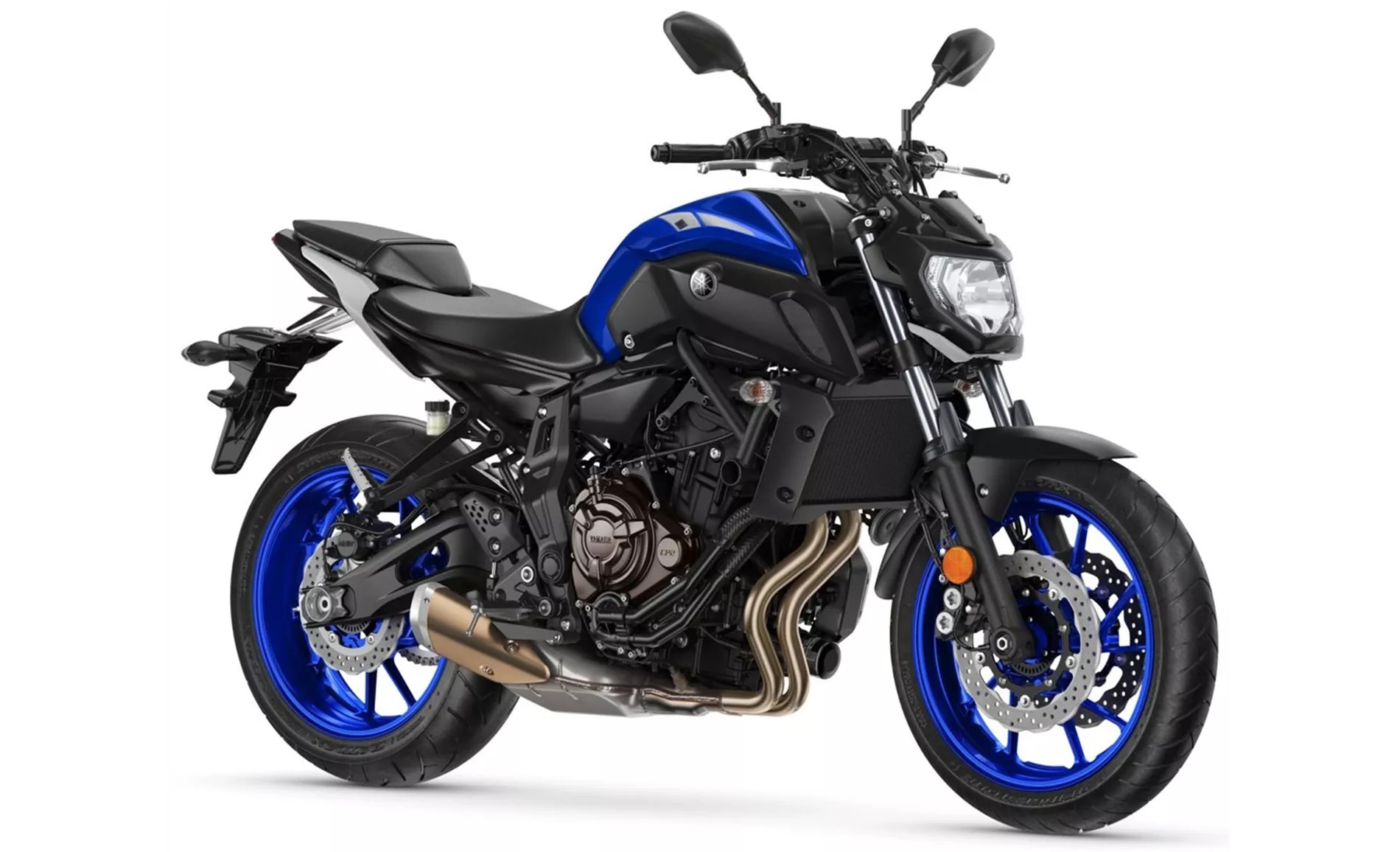
Yamaha MT-07 2020
Moving on to the strengths of each bike, the Z900 is praised for its powerful and smooth engine, delivering a thrilling ride. It also offers a great sound, adding to the overall experience. The Z900's chassis provides excellent stability and a sharp, sporty look. Additionally, its low seating position and easy handling make it a comfortable and maneuverable bike.
On the other hand, the MT-07 is known for its high-torque two-cylinder engine, providing ample power for everyday riding. Its chassis is well-set-up, offering a balanced and enjoyable ride. The MT-07 also offers a pleasant seating position and a wide range of accessories to customize the bike according to the rider's preferences. Furthermore, the MT-07 is often praised for its reasonable price-performance ratio.
However, both bikes have their weaknesses. The Z900 lacks traction control, which may be a drawback for riders who prioritize safety features. Additionally, tall riders may find the knee angle on the Z900 strenuous during long rides. As for the MT-07, some riders feel that the optics and fittings already look outdated, and the controls on the handlebars may feel a bit cheap.
In conclusion, the Kawasaki Z900 2018 and the Yamaha MT-07 2020 are both impressive naked bikes with their own unique strengths and weaknesses. The Z900 offers a more powerful engine and a sportier look, while the MT-07 provides a well-balanced ride and a more affordable price. Ultimately, the choice between the two will depend on the rider's preferences, priorities, and budget.
Teknik Özellikler Kawasaki Z900 2018 ile karşılaştırıldığında Yamaha MT-07 2020
Karşılaştırıldığında Artıları ve eksileri
Karşılaştırıldığında Artıları ve eksileri
Kawasaki Z900 2018
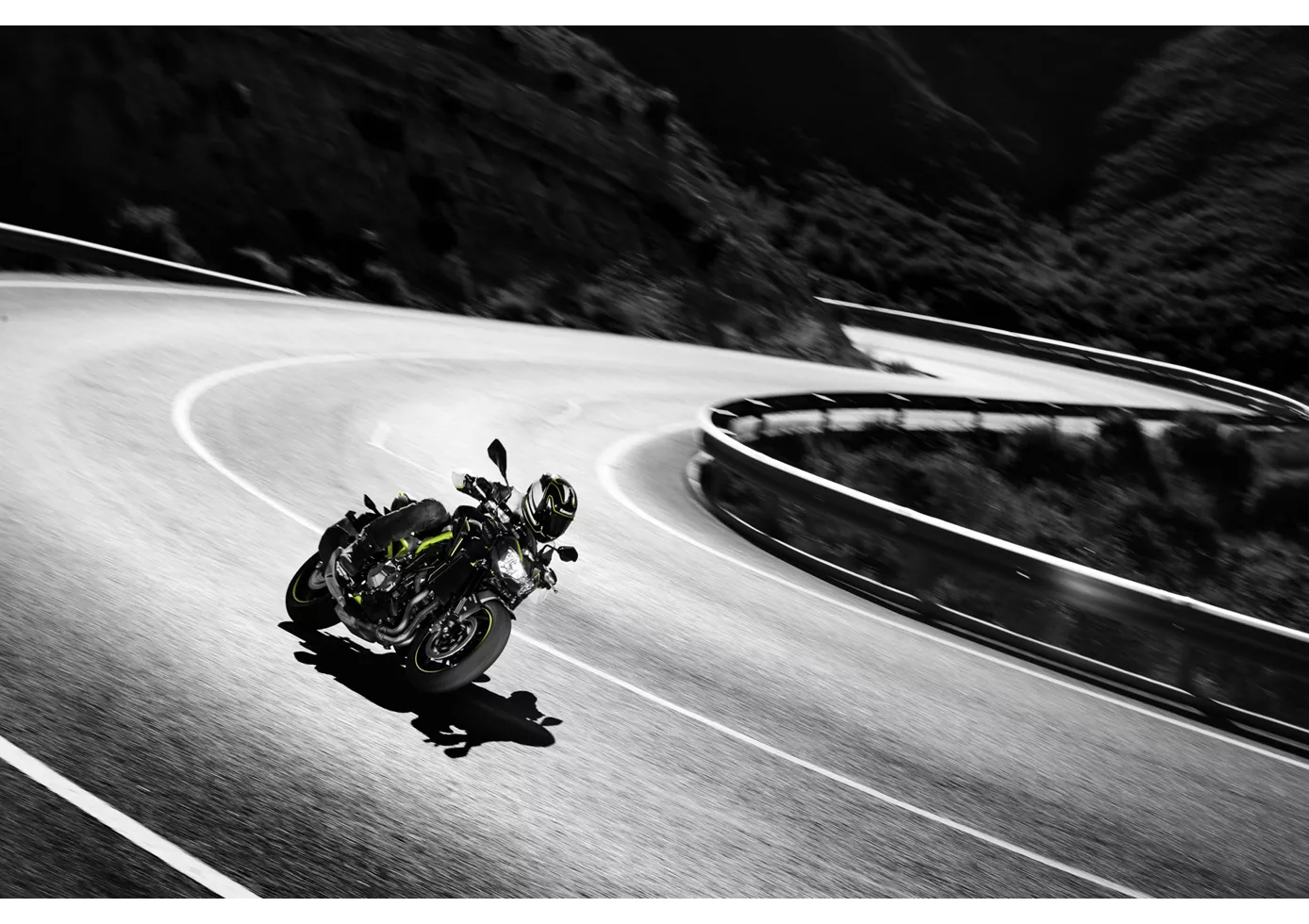
Z900, çekismeli naked motosiklet segmentinde ön siralarda yer aliyor. Her seyden önce, motoru kesinlikle mükemmeldir, inanilmaz derecede sorunsuz çalisir ve tüm devir araliklarinda bol miktarda güç sunar - bir Japon dört silindirli motora yakisir sekilde. Sportif, agresif görünümü de buna uyuyor. Elektronik zil ve isliklardan vazgeçiyor, ancak yine de viraj alirken, fren yaparken ve virajlardan hizlanirken büyük ölçüde güvenlik sagliyor. Alçak koltuk özellikle küçük sürücüler için faydalidir, ancak daha uzun boylu sürücüler uzun yolculuklarda daha düz bir diz açisini özleyebilirler. Düsük agirlik ve kompaktlik Z900'ü özellikle manevra kabiliyeti yüksek ve kullanimi kolay hale getirir. Fiyat açisindan da son derece cazip bir spor topu
Yamaha MT-07 2020
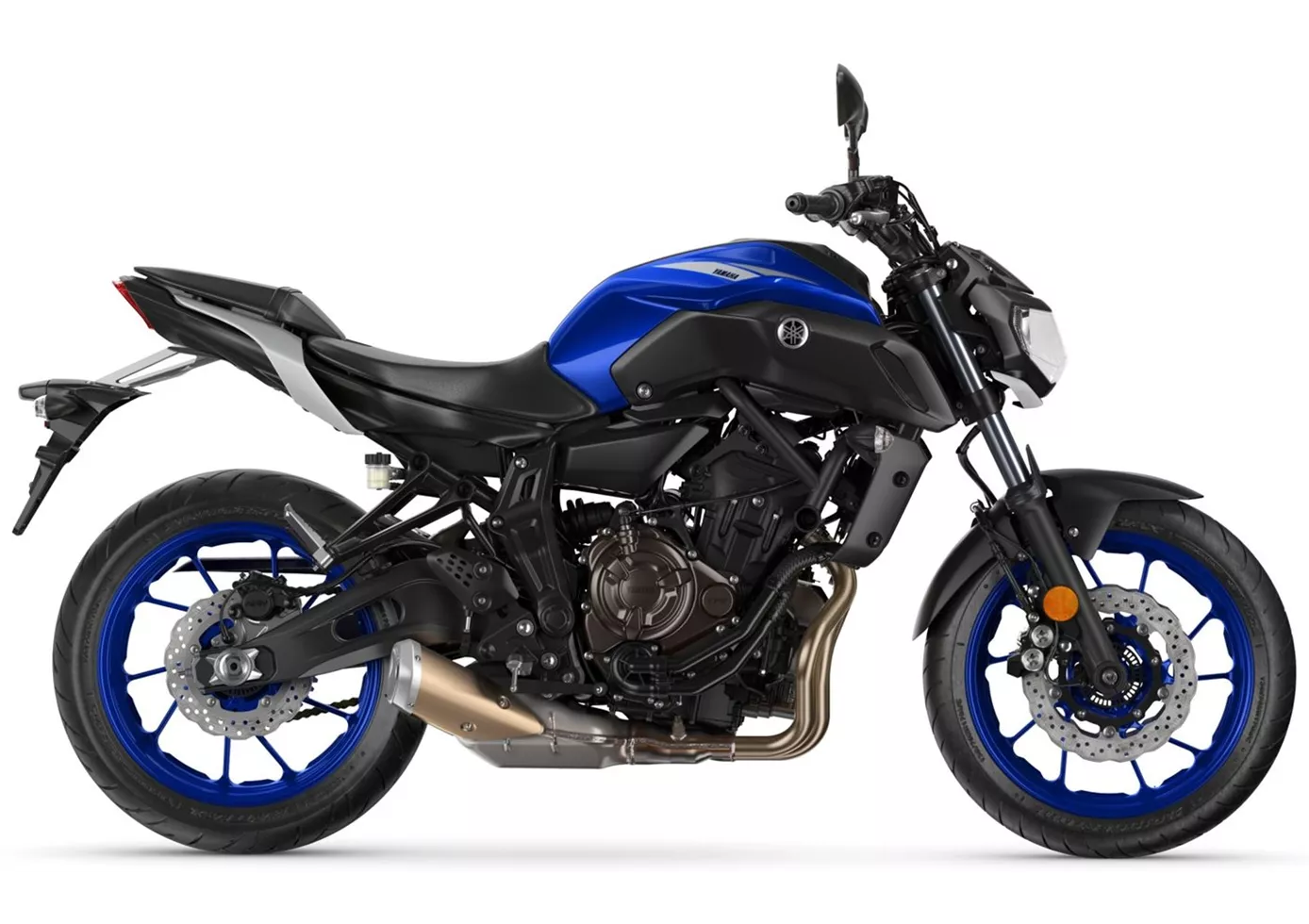
MT-07, sürüsü son derece sportif olan fevkalade eglenceli bir makinedir. Frenler çok güçlü ve motor su anda bu siniftaki en çevik güç ünitesi - hatta belki de daha iyi. Hafif yol tutusu buna mükemmel bir sekilde uyuyor ve süspansiyon konfor ve spor arasinda anlasilabilir bir uzlasma sagliyor - bize uygun fiyatli MT-07'nin yeni baslayanlar için de sunabilecegi çok sey oldugunu hatirlatiyor. Sadece halojen farli ve geleneksel çatalli tasarim oldukça eski moda.
Fiyat Karşılaştırması Ortalama Piyasa Fiyatı Kawasaki Z900 vs Yamaha MT-07
There are a few key differences between a Kawasaki Z900 2018 and a Yamaha MT-07 2020. In terms of price, the actual average price of a Kawasaki Z900 2018 is about 29% higher. A Kawasaki Z900 2018 experiences a loss of 640 USD in one year of ownership. This is offset by a loss of 40 USD for a Yamaha MT-07 2020. Compared to Yamaha MT-07 2020 there are more Kawasaki Z900 2018 bikes available on the 1000PS.de Marketplace, specifically 55 compared to 20. It takes less time to sell a Yamaha MT-07 with 69 days compared to 112 days for the Kawasaki Z900. Since model year 2017 1000PS.de editors have written 46 reviews for the Kawasaki Z900 and 69 reviews for the Yamaha MT-07 since model year 2013. The first review for the Kawasaki Z900 was published on 11/11/2016 and now has more than 93,200 views. This compares to more than 12,600 views for the first review on Yamaha MT-07 published on 11/4/2013.
